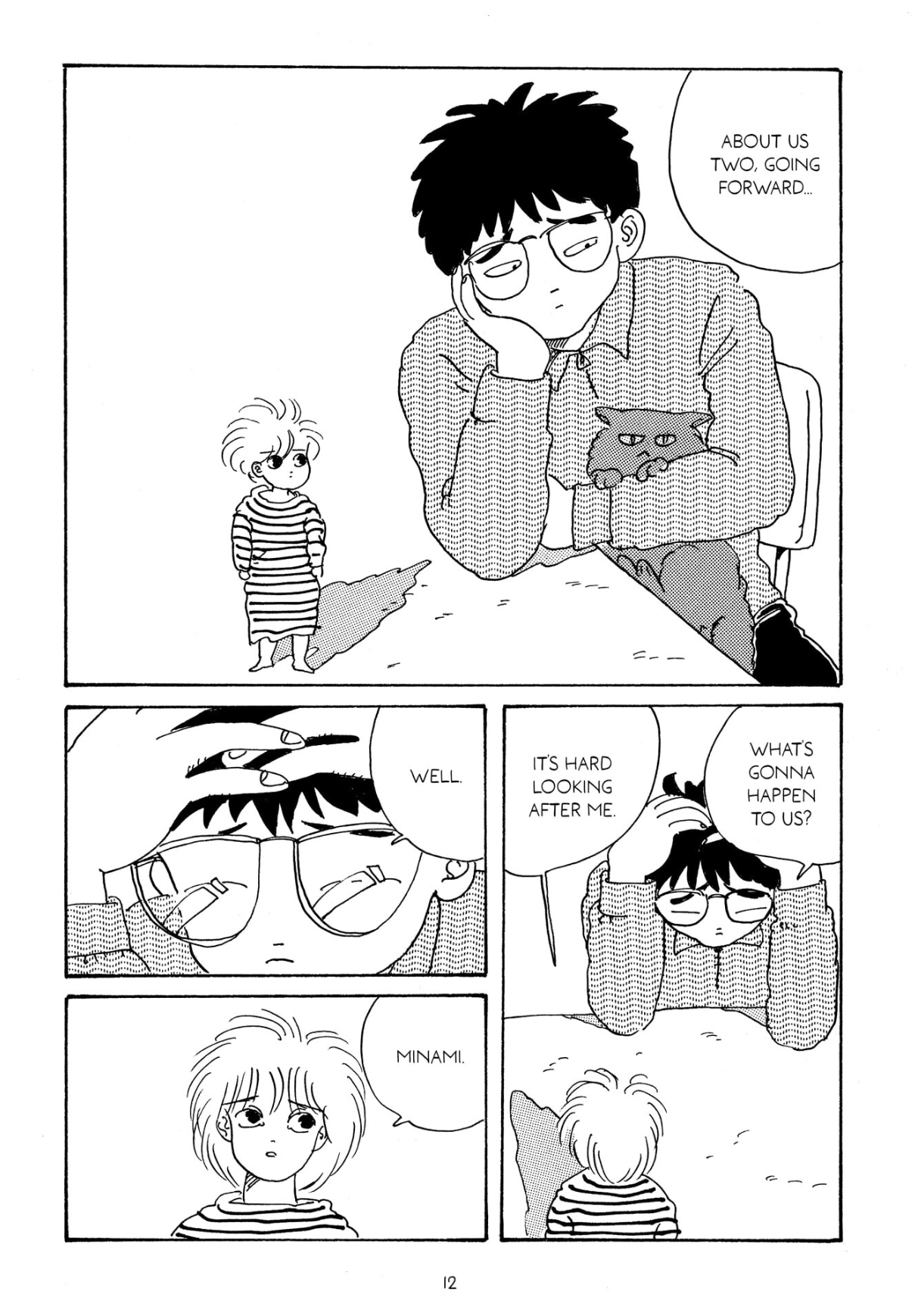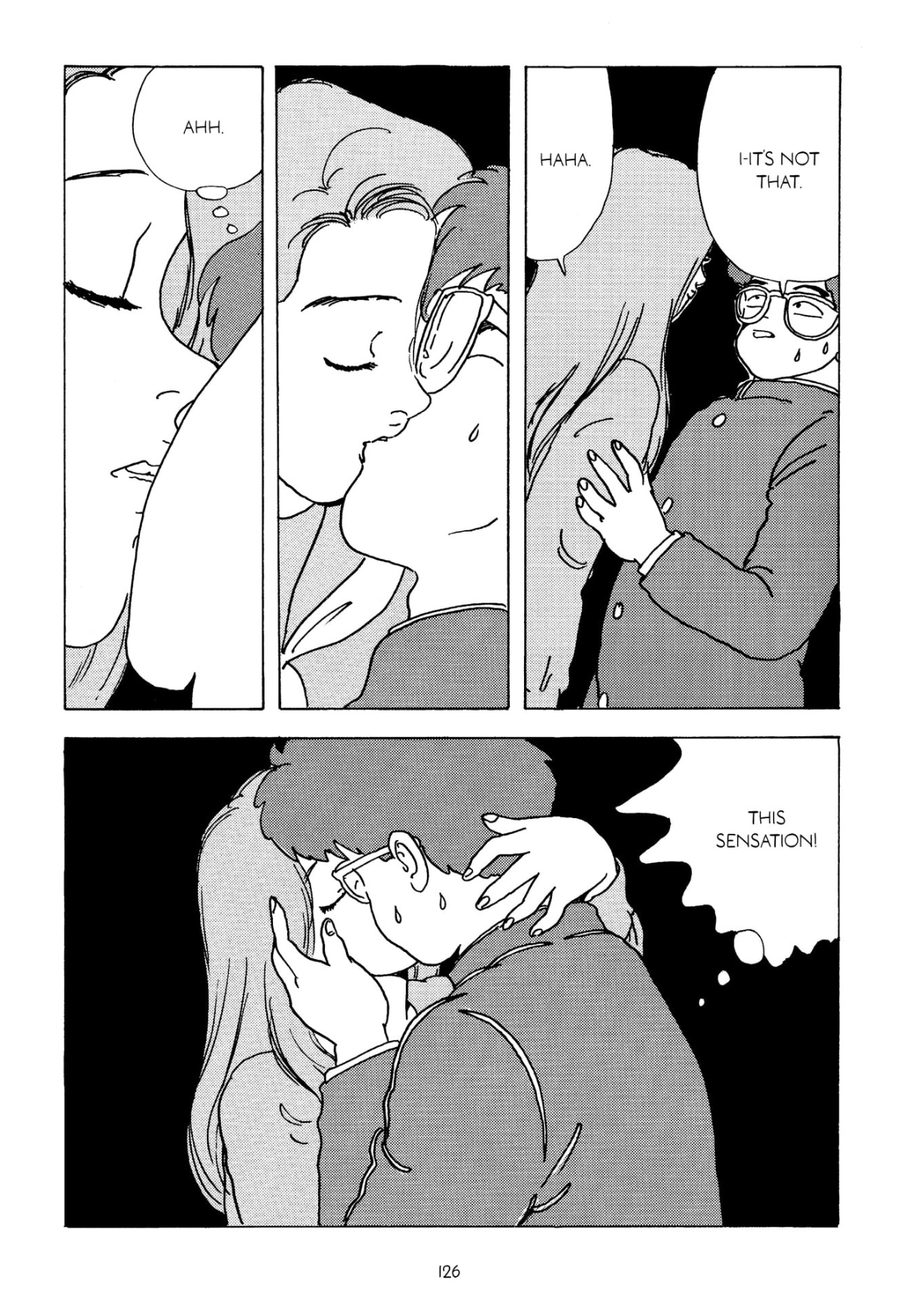Minami-kun no Koibito originally ran from October 1986 to June 1987 in the magazine Garo. That this overlaps with the original run of Watchmen as a monthly comic is pure coincidence, mentioned here only for the purpose of situating our story in its place in history. You will understand the significance of the late '80s for producing some of our most beloved comics, such as the book now available in English as Minami's Lover, which was adapted for Japanese television four times between 1990 and 2015.
It's easy to be surprised, even at this late date, with just how better-integrated all manner of comics were and are to the rest of the Japanese entertainment industry. If you’ve heard of Garo, you’ve heard it mentioned in the context of alternative manga, or the Japanese “underground” - maybe you read Yoshiharu Tsuge’s "Nejishiki", one of the magazine’s most famous stories, when it was translated by Bill Randall and reprinted under the title of "Screw Style" in the epochal 250th issue of The Comics Journal. (One of the magazine’s best-ever single issues, and god bless Milo George.) “Nejishiki” is one of the most indelible short comics in the history of the medium. Despite it being a deeply surreal horror story, it was adapted into a movie in 1998 (known in English over the years under titles like "Wind-Up Type" and "Screwed"), and a computer game in 1989.
So perhaps from this jaundiced perspective there is no ready cultural analogy to the stature of Garo. As a countercultural apparatus, there was nothing on this side of the Pacific that compares in terms of reach or influence. If you’re of the mind to characterize the American comic book industry as an unenlightened backwater stunted by perpetual infantilization, just try to imagine a similar situation: a sexually explicit comics serial by an iconoclastic feminist cartoonist, running in the pages of RAW or Weirdo, that just happens to go on to become a perennial television classic.
Minami’s Lover, translated for us today by H. Paige and published by Fantagraphics, is the story of Chiyomi, a Japanese high school student who shrinks to become a tiny doll person - four or five inches tall. Why does this happen? The story very scrupulously goes out of its way to avoid even alluding in the direction of an answer. Science experiment, witch’s curse, alien genes, whichever. Not explained, not really pertinent, only to the extent that it’s an unusual circumstance, something to be hidden. The point is not why or how, but simply that Chiyomi’s life has been destroyed and she’s in the custody of her boyfriend, Minami. Being tiny, she is dependent on another person for literally everything - food and shelter and clothing, yes, as well as changing the bathroom bucket and providing specially-sized sanitary pads.
Now, I know what you’re thinking - why doesn’t she just start fighting crime? Doll Man was permanently trapped at a tiny size, after all, and he made it work. Sadly, I don’t think Shungiku Uchida was particularly trying to deliver an homage to the work of Will Eisner and Lou Fine, as delicious an idea as that might seem.
Uchida is a multitalented sort, not merely a cartoonist but also a musician, and actress, and prose writer. In 1993 she wrote a semi-autobiographical novel called Fatherfucker that they also made into a movie, which apparently went right at the subjects of abuse and incest. For all the successes of Japanese cultural imports, the country nonetheless gets a lot of crap in the foreign eye for being a repressed, doggedly conservative society. For whatever truth may exist in this notion, the concept seems to me a degree exaggerated by people who want to believe (and indeed lionize) this reactionary stereotype, despite ample evidence that the country has, in many respects, a healthier relationship with stories about taboo subjects than America. (Also, a “healthier relationship” with publishing sexually explicit media about characters at high school age, which is another conversation completely.) The question is, which is worse: a child talking back to a parent, or a parent abusing a child? The most terrible people in every country believe the former to be worse than the latter, invariably, and act accordingly. Uchida seems to have built a career out of poking those kinds of people in the eye.
Minami’s Lover is a book partly about sex, clearly, but there’s a bleakness at its heart that seems to circumscribe the pleasure of its participants. Chiyomi is a burden for Minami; the story is never ambiguous on the subject. They’re both still high school age. The plot doesn’t press too heavily on the topic, but it’s mentioned in passing that the police know Chiyomi has disappeared. People are looking for her. The option is on the table for her to go back to her parents instead of leaning on Minami for support, but she really doesn’t seem to want to do that, just as she doesn’t want to go to any kind of doctor.
Although the story presents itself as a kind of fable, the stakes are nevertheless concrete. Chiyomi doesn’t want to go to the doctors because she doesn’t want to be poked and prodded and stuck in a cage like an experiment. Whatever the reason behind her sudden change, it’s unusual enough that she doesn’t want to be held captive by the government any more than she wants to put herself under the power of her parents. She’s helpless, vulnerable in the most abject way; at the mercy of a world that can injure her at the slightest provocation. Given this, she finds it preferable to sit around Minami’s room in the tiny smocks he sews for her.
Chiyomi doesn’t have a lot of good options, in other words. The dilemma is that of a person completely stripped of agency, to the extent that Minami begins to think of her as a kind of pet. She’s someone who needs to be fed and changed and carried around in a little box, and for whom any agency regarding the shape of their life is purely decorative. Chiyomi and Minami are able to recreate something resembling a sex life, despite the obvious obstacles. The biggest obstacle, however, and one that is purposefully never addressed to any satisfaction: just how much agency does Chiyomi have in any aspect of her relationship with Minami? He’s clearly a horny guy, and given his age that’s probably to be expected. Whatever erotic charge she gets out of being a doll or a pet for a much larger man, it’s not a relationship where she has a lot of room to maneuver. When he gets a wandering eye, it seems inevitable.
He’s a schmuck, yes, but in fairness he’s also a teenage boy. It’s a well-known fact that grown adult men are much more likely to leave a disabled or illness-stricken partner than are woman, by a rather depressing ratio. It’s not particularly fair for a kid to end up in that position. But then, it’s not particularly fair for Chiyomi to have been so shrunk in the first place. When you put unformed people into depressing no-win situations, you can’t be surprised when the results are selfish and bleak.
Now, with that said: Uchida has clearly put a fair amount of thought into the idea of just what a fulfilling sexual relationship might look like between a tiny woman and a gigantic man. Part of the danger of the scenario comes from precisely that erotic acknowledgement. This is certainly a fetish for someone, you think, not an uncommon or even an unfair accusation for a great many comics that deal with magical transformations. (Such as Doll Man, for example, or Avengers [Vol. 3] #71 in 2003. That’s the one where Hank Pym and the Wasp have relatively explicit size-changing sex in Las Vegas - surely Geoff Johns’ great contribution to the tapestry of the Marvel Universe.) Discrete sections of Minami’s Lover play out with great concern for this sexual dynamic, but these sex scenes are also given in the context of a work largely about the shrinking horizons of a young woman’s agency. From high school student to sex toy, Chiyomi’s world has become a reflection of her options: infinitely small. Does she even have a choice to say no?
As I’ve been mulling over Minami’s Lover, the closest western analogy that has occurred to me is the early work of Chester Brown, another cartoonist with a minimalist bent who writes about sex primarily as a locus of trauma for unformed young people. Also someone not afraid to place a weird conceit under the strain of an unyielding realism. Uchida's aesthetic is sparse, with a focus on caricature - Chiyomi’s face is just a handful of lines under a shock of hair. It’s a bare, blasted style, sketchy and tentative, emotionally raw. The story doesn’t have a happy ending, though perhaps an inevitable ending. I won't spoil it.
Minami’s Lover takes a hoary fantasy trope and plays it completely straight - a rare kind of speculative fiction defined by unblinking attention to the personal horror of the strange. Shrinking isn’t fun or empowering, or even particularly adventurous. There are no pulse-pounding scenes where Chiyomi fights a rat with a sharpened pencil, or anything like that. It’s a concretized metaphor for a woman’s dwindling agency, cut down at almost the precise moment she would otherwise assume majority. As such, the erotic possibilities of the characters' lives seem squandered and sordid: perhaps not completely one-sided, but also transactional in a way that shadows every move therein. A doggedly sad book from first to last, and one that will stay with you.












